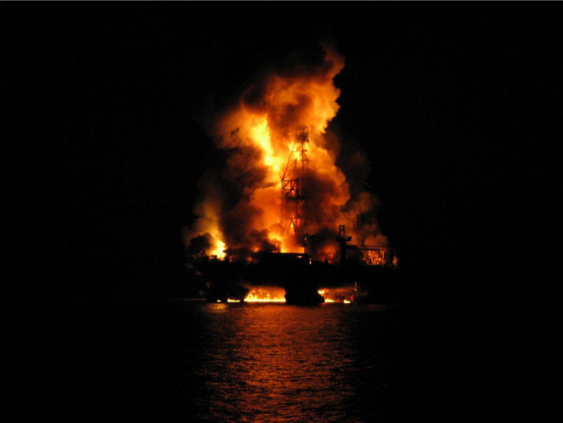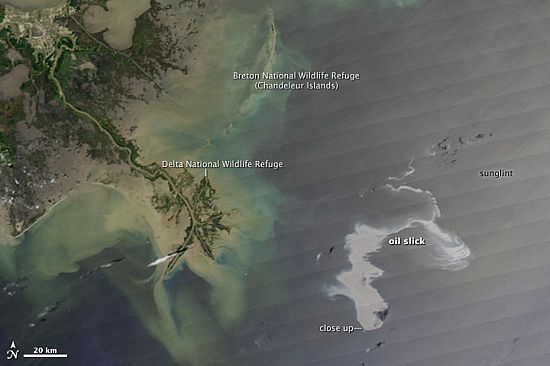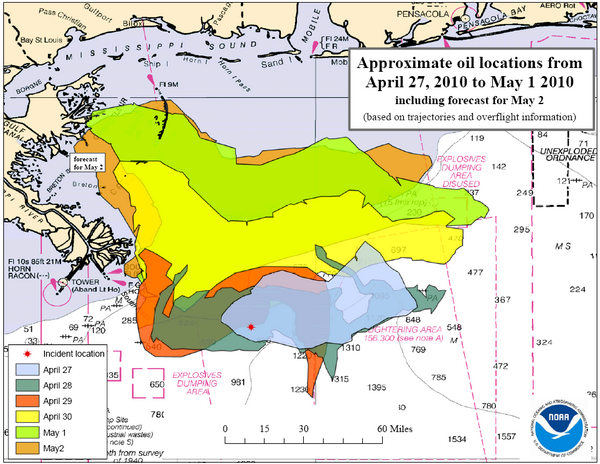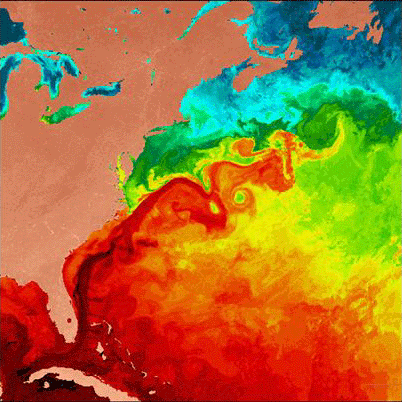It looks like you're using an Ad Blocker.
Please white-list or disable AboveTopSecret.com in your ad-blocking tool.
Thank you.
Some features of ATS will be disabled while you continue to use an ad-blocker.
share:
The Deepwater Horizon oil spill on April 22, 2010 may become nothing less than profound. While its impact to the environment seems assured, its impact to social and political institutions may be just as significant...
Lawyers flock to Gulf Coast for oil spill lawsuits
This is an EPIC disaster in slow motion.
It may also become the legacy most remembered by our decendants.
Let's see how:
This oil spill 'the bad one': recipe for disaster
What makes an oil spill really bad? Most of the ingredients for it are now blending in the Gulf of Mexico.
Experts tick off the essentials: A relentless flow of oil from under the sea; a type of crude that mixes easily with water; a resultant gooey mixture that is hard to burn and even harder to clean; water that's home to vulnerable spawning grounds for new life; and a coastline with difficult-to-scrub marshlands.
Gulf Coast experts have always talked about "the potential for a bad one," said Wes Tunnell, coastal ecology and oil spill expert at Texas A&M University-Corpus Christi.
"And this is the bad one. This is just a biggie that finally happened."
So how much "relentless flow" are we talking about?
Well, first the estimates were 1,000 barrels a day... Then that number was quickly revised to 5,000 barrels.
Officials with the National Oceanic and Atmospheric Administration revised their estimates of the amount of oil that has been leaking from the oil well from 1,000 barrels a day to up to 5,000 barrels a day, or about 210,000 gallons.
Source.
Then the number was revised yet again to 25,000 barrels a day.
Experts: Oil May Be Leaking at Rate of 25,000 Barrels a Day in Gulf
The Gulf of Mexico oil spill could be leaking at a rate of 25,000 barrels a day, five times the government's current estimate, industry experts say.
Basing their calculations on government data and standard industry measurement tools, the experts said the Gulf spill may already rival the historic 1969 Santa Barbara, Calif., and 1989 Exxon Valdez disasters.
Ian MacDonald, professor of oceanography at Florida State University who specializes in tracking ocean oil seeps from satellite imagery, said there may already be more than 9 million gallons of oil floating in the Gulf now.
That's not good.
Incredibly, this past Friday, a new number was suggested.... 50,000 barrels a day!!!
Leaked government report fears unchecked gusher
A leaked report from the National Oceanic and Atmospheric Administration's Emergency Ops document dated April 28 has the Coast Guard preparing for a worst case release that could potentially become an unchecked gusher meaning that instead of releasing 5,000 barrels a day or 210,000 gallons a day, it would release 50,000 barrels a day, or 2.1 million gallons a day.
"The following is not public," reads the report, "Two additional release points were found today. If the riser pipe deteriorates further, the flow could become unchecked resulting in a release volume an order of magnitude higher than previously thought."
The actual evidence looks no less grim:
Oil slick's area triples in size
The surface area of a catastrophic Gulf of Mexico oil spill quickly tripled in size...
...
The Coast Guard conceded Saturday that it's nearly impossible to know how much oil has gushed since the April 20 rig explosion...
...
"The spill and the spreading is getting so much faster and expanding much quicker than they estimated," said Hans Graber, executive director of the university's Center for Southeastern Tropical Advanced Remote Sensing. "Clearly, in the last couple of days, there was a big change in the size."
And the bad news keeps pouring in...
- Gulf Stream May Send Oil Spill Up East Coast
- UF expert says oil spill
could spread to east coast of Florida
- Ga.Wildlife Officials 'On
Standby'
Woodward does say there is a "nightmare scenario" which could actually bring oil to Georgia's coast. That's because if the volume of spreading oil is not contained enough, some of it could get into the Gulf Stream, which connects to the shorelines of the Eastern Seaboard states.
"There's some concern if the volume of oil is not reduced somehow that we'll get quantities of oil entrained in the loop current and subsequently in the Gulf Stream and it will be brought up the eastern seaboard...which is a kind of a nightmare scenario."
If 50,000 barrels (or 2,100,000 gallons) of oil a day is an accurate number, in November, the size of this disaster will exceed the largest of its kind in history...the Gulf War Oil Spill:
Gulf War oil spill
The Gulf War oil spill is regarded as the largest oil spill in history, resulting from actions taken during the Gulf War in 1991 by the Iraqi military.
It caused considerable damage to wildlife in the Persian Gulf especially in areas surrounding Kuwait and Iraq. Estimates on the volume spilled range from 42 to 462 million gallons; the slick reached a maximum size of 101 by 42 miles and was 5 inches thick. Despite the uncertainty surrounding the size of the spill, figures place it 5 to 27 times the size (in gallons spilled) of the Exxon Valdez oil spill, and more than twice the size of the 1979 Ixtoc I blow-out in the Gulf of Mexico.
The wikipedia article continues to say:
According to a study sponsored by UNESCO, Bahrain, Iran, Iraq, Kuwait, Oman, Qatar, Saudi Arabia, the United Arab Emirates and the United States, the spill did little long-term damage. About half the oil evaporated, a million barrels were recovered and 2 million to 3 million barrels washed ashore, mainly in Saudi Arabia.
So maybe we get lucky.
But the crude is different...and the locations are different. And none of the solutions being discussed right now look like they can be accomplished in the next several months...or that they will even work.
I suppose we'll all know soon enough.
See also:
And:
- Oil Spill’s ‘Fisheries Failure’ May Signal End of Coastal Towns
- Scientists watch for environmental effects of Gulf of
Mexico oil spill
- Oil spill threatens Gulf region's ecosystem and fishing,
tourism and shipping industries
- Florida beaches
bracing for economic impact of oil spill
And finally,
----------------------
UPDATE:
Coast Guard Commandant Adm. Thad Allen, "we lost a total well head-- it could be 100,000 barrels or more a day."
Oil Spill Tracker Map
Edit by request
[edit on 7/5/10 by masqua]
This thread covers a super important issue.
The more I think about this, the worse I feel about it.
It truly is shaping up to be one of, if not the worst, disaster of it's kind.
Do they have any theories on how to "plug the hole" so to speak? I'd love to know their plan for stopping the leak.
Starred and flagged because it's super important other people read the research you have conducted.
Very good work Loam.
The more I think about this, the worse I feel about it.
It truly is shaping up to be one of, if not the worst, disaster of it's kind.
Do they have any theories on how to "plug the hole" so to speak? I'd love to know their plan for stopping the leak.
Starred and flagged because it's super important other people read the research you have conducted.
Very good work Loam.
reply to post by loam
Loam.....
Thanks for starting this very interesting thread.
Did I hear correctly.....
Is the rupture on the sea floor 5,000 feet beneath the ocean surface?
Is the oil deposit a further 18,000 feet beneath the ocean floor?
If so, that will require some amazing technology & processes to seal that rupture.
Kind regards
Maybe...maybe not
Loam.....
Thanks for starting this very interesting thread.
Did I hear correctly.....
Is the rupture on the sea floor 5,000 feet beneath the ocean surface?
Is the oil deposit a further 18,000 feet beneath the ocean floor?
If so, that will require some amazing technology & processes to seal that rupture.
Kind regards
Maybe...maybe not
Wait a minute, have they any estimation how much oil exists under there? If all of it surfaced then is the gulf of mexico just wasted? Will this end
bird migration of entire species? WTH...
reply to post by mark_price
BP was reportedly days away from announcing a “commercially attractive” oil deposit discovery when the explosion occurred.
Whatever that means...
Originally posted by mark_price
Wait a minute, have they any estimation how much oil exists under there?
BP was reportedly days away from announcing a “commercially attractive” oil deposit discovery when the explosion occurred.
Whatever that means...
reply to post by loam
It probably means that there is a hell of a lot of oil down there, and it's now leaking into the gulf. That nuclear option is not looking so bad after all.
It probably means that there is a hell of a lot of oil down there, and it's now leaking into the gulf. That nuclear option is not looking so bad after all.
S+F OP, this post is really good.
As to the subject, i can say my heart is broken. It's just too big and too ugly, the implications of this are VAST.
What did New Orleans ever do to anyone? That's what i want to know.
As to the subject, i can say my heart is broken. It's just too big and too ugly, the implications of this are VAST.
What did New Orleans ever do to anyone? That's what i want to know.
reply to post by warpcrafter
I'm afraid that would make an ever bigger mess!
The only thing I can think of worse than an oil spill under these conditions is a radioactive oil spill under these conditions.
Yikes.!
[edit on 2-5-2010 by loam]
Originally posted by warpcrafter
That nuclear option is not looking so bad after all.
I'm afraid that would make an ever bigger mess!
The only thing I can think of worse than an oil spill under these conditions is a radioactive oil spill under these conditions.
Yikes.!
[edit on 2-5-2010 by loam]
Hi OP, S&F for you for this interesting and important post.
I suggest that everyone flag this thread. This could potentially go down as an important part of our time's history.
I will be leaving in just a few hours to help with the cleanup with the wetlands of the Mississippi Delta that will take a while. I plan to document the project through a journal and lots of pictures, and I will be sure to post parts of that for the ATS community.
While I feel like what I will be doing is important, I'm overwhelmed thinking about the devastation that will ensue from this disaster, no matter what we do in the coming weeks and months. It is sure that there will be lasting ecological consequences stemming from this accident.
I am hopeful and sad at the same time.
I suggest that everyone flag this thread. This could potentially go down as an important part of our time's history.
I will be leaving in just a few hours to help with the cleanup with the wetlands of the Mississippi Delta that will take a while. I plan to document the project through a journal and lots of pictures, and I will be sure to post parts of that for the ATS community.
While I feel like what I will be doing is important, I'm overwhelmed thinking about the devastation that will ensue from this disaster, no matter what we do in the coming weeks and months. It is sure that there will be lasting ecological consequences stemming from this accident.
I am hopeful and sad at the same time.
reply to post by loam
wattsupwiththat.com... osion-on-the-scene-photos/
A science blog i frequent. Everything you need to know about what happened.
peace
wattsupwiththat.com... osion-on-the-scene-photos/
A science blog i frequent. Everything you need to know about what happened.
peace
reply to post by loam
Thank You for collating all this shocking info, on British tv news up till now the 5000 gallons a day figure keeps being put out, I knew from reading ATS that wasn't true, just an indicator of the power of big oil and the spun msn.
Thank You for collating all this shocking info, on British tv news up till now the 5000 gallons a day figure keeps being put out, I knew from reading ATS that wasn't true, just an indicator of the power of big oil and the spun msn.
www.lifeaftertheoilcrash.net...
Perhaps you should all read this blog from no other than Michael Ruppert. the man that brought us "Collapse" and in my personal opinion, the absolute "go-to man" concerning energy, peak oil and events such as this one.
Expect 100 dollar oil as of next week, and if this disaster is of such a magnitude that some engineers and environmentalists are suggesting, then you can also expect the worlds oceans to become poisoned resulting in a cascading eco-system shutdown.
Perhaps we are looking at the worst disaster mankind will ever see?
The "CLIFF-EVENT" that peak oil activists often talk about
Perhaps you should all read this blog from no other than Michael Ruppert. the man that brought us "Collapse" and in my personal opinion, the absolute "go-to man" concerning energy, peak oil and events such as this one.
Expect 100 dollar oil as of next week, and if this disaster is of such a magnitude that some engineers and environmentalists are suggesting, then you can also expect the worlds oceans to become poisoned resulting in a cascading eco-system shutdown.
Perhaps we are looking at the worst disaster mankind will ever see?
The "CLIFF-EVENT" that peak oil activists often talk about
Originally posted by harryhaller
reply to post by loam
wattsupwiththat.com... osion-on-the-scene-photos/
A science blog i frequent. Everything you need to know about what happened.
peace
Harryhaller.....
Thanks for posting that very interesting link.
Amongst other things, that confirms my "5,000 feet deep" & "18,000 feet deep" numbers in my 1st post......I was very curious about that.
Kind regards
Maybe...maybe not
New Technique Holds Hope for Oil Spill Cleanup
Among the various weapons employed against the gushing crude has been the distribution of chemical dispersants on the water’s surface to break down the oil. The new approach involves the deployment of the dispersants underwater, near the source of the leaks. Officials said that in two tests, that method appeared to be keeping crude oil from rising to the surface. They said that the procedure could be used more frequently once evaluations of its impact on the deepwater ecology were completed.
Those experiments at the wellhead of the collapsed Deepwater Horizon oil rig were just one sign of the frantic efforts to contain...[the spill.]
This approach actually makes me VERY nervous. Under these circumstances, how will they truly asses the impact on the deepwater ecology?
Isn't the urge to just "bury" the problem great here? Is this a "cosmetic" fix that does little to stem the devastation? I wonder what these chemicals are?
:shk:
More:
The article continues:
mark_price, there's another hint of an answer to your question.
[edit on 2-5-2010 by loam]
BP said it could handle a 162,000 barrels per day disaster
BP officials say it was impossible to know just how much oil was gushing from the well, but company and federal officials were preparing for the worst-case scenario.
In an exploration plan and environmental impact analysis filed with the federal government in February 2009, BP said it had the capability to handle a "worst-case scenario" at the site, which the document described as a leak of 162,000 barrels per day from an uncontrolled blowout — 6.8 million gallons (26 million liters) each day.
Oil industry experts and officials are reluctant to describe what, exactly, a worst-case scenario would look like — but if the oil gets into the Gulf Stream and carries it to the beaches of Florida, it stands to be an environmental and economic disaster of epic proportions.
The well is at the end of one branch of the Gulf Stream, the warm-water current that flows from the Gulf of Mexico to the North Atlantic. Several experts said that if the oil enters the stream, it would flow around the southern tip of Florida and up the eastern seaboard.
The article continues:
BP has not said how much oil is beneath the seabed Deepwater Horizon was tapping. A company official, speaking on condition of anonymity because he was not authorized to discuss the volume of reserves, confirmed reports that it was tens of millions of barrels.
mark_price, there's another hint of an answer to your question.
[edit on 2-5-2010 by loam]
100,000 barrels or more a day!!!
Coast Guard Commandant Adm. Thad Allen, "we lost a total well head: it could be 100,000 barrels or more a day."
OMG!!!
Straight from the mouth of the guy in charge!
This is unbelievable...unimaginable!!!
Remember, BP placed the initial estimates at 1,000 barrels per day.
[edit on 2-5-2010 by loam]
Coast Guard Commandant Adm. Thad Allen, "we lost a total well head: it could be 100,000 barrels or more a day."
OMG!!!
Straight from the mouth of the guy in charge!
This is unbelievable...unimaginable!!!
Remember, BP placed the initial estimates at 1,000 barrels per day.
[edit on 2-5-2010 by loam]
I wonder if it is at all possible to take a sub and launch a large torpedo at the hole where the oil is coming out of and cave it in enough to stop
and seal it back up? I would think it should be possible.
I've been wondering how much oil is down there and found this...
www.timesonline.co.uk...
Wow this is a nightmare...
This from Meet the Press this morning
www.timesonline.co.uk...
BP has not said how much oil is beneath the Gulf seabed Deepwater Horizon was tapping, but a company official speaking on condition of anonymity because he was not authorized to discuss the volume of reserves, confirmed reports that it was tens of millions of barrels – a frightening prospect to many.
Wow this is a nightmare...
This from Meet the Press this morning
BREAKING -- Interior Secretary Ken Salazar, to David Gregory on “Meet the Press,” on the Gulf gusher: “The scenario is a very grave scenario. You’re looking at potentially 90 days before you ultimately get to what is the ultimate solution here, and that’s a relief well that’s going to have to be built down three and a half miles below the ocean floor. And by the time you drill that well down, a lot of oil could spread. … This is the beginning of a campaign for what’s going to be a massive restoration of the Gulf coast.”
WORST-CASE SCENARIO – AP: “Scientists fear if the oil spill isn't contained and the underwater well continues to spew unstopped, it could grow so large that it may be sucked with the currents around the Florida Keys and up the East Coast.”
Good Sunday morning. The president is scheduled to leave the White House at 10:45 a.m. for his trip to Louisiana.
hey...com'n...look at all the jobs BP has provided, and look at all the taxes they paid...doesn't that justify a little oil spill now and then??? i
mean, you don't want your taxes raised to develop clean energy, do you?
this is just the tradoffs we have to endure, to make sure we have plenty of petrol for our cars and trucks and airplanes. BP will pay people off, get a large fine, and it will be back to business as normal.
this is just the tradoffs we have to endure, to make sure we have plenty of petrol for our cars and trucks and airplanes. BP will pay people off, get a large fine, and it will be back to business as normal.
reply to post by Iamonlyhuman
A minimum of 90 days times 100,000 barrels per day is 9 million barrels or 387 million gallons of oil.
At 100,000 barrels of oil per day, that number also shortens my previous estimate of November to sometime in August as the point in time when this spill exceeds the largest ever in history!
These are truly uncharted waters!
A minimum of 90 days times 100,000 barrels per day is 9 million barrels or 387 million gallons of oil.
At 100,000 barrels of oil per day, that number also shortens my previous estimate of November to sometime in August as the point in time when this spill exceeds the largest ever in history!
These are truly uncharted waters!
new topics
-
Tesla Cybertruck Explodes in Front of Trump Hotel in Las Vegas
Mainstream News: 5 hours ago -
Maybe they didn't get away with it: The Lincoln-Kennedy assassination parallels. 7 sentences long.
History: 7 hours ago -
Ukraine halts transit of Russian gas to Europe after a prewar deal expired
Political Conspiracies: 11 hours ago
top topics
-
Vehicle Strikes people in New Orleans
Mainstream News: 15 hours ago, 23 flags -
Tesla Cybertruck Explodes in Front of Trump Hotel in Las Vegas
Mainstream News: 5 hours ago, 14 flags -
Ukraine halts transit of Russian gas to Europe after a prewar deal expired
Political Conspiracies: 11 hours ago, 11 flags -
Welp...Happy New Year!!
General Chit Chat: 13 hours ago, 7 flags -
The Hand that Rocks the Cradle - Labour Plans “diversities of our society” Curriculum Change
Regional Politics: 15 hours ago, 6 flags -
Maybe they didn't get away with it: The Lincoln-Kennedy assassination parallels. 7 sentences long.
History: 7 hours ago, 4 flags
active topics
-
Vehicle Strikes people in New Orleans
Mainstream News • 233 • : Mantiss2021 -
Tesla Cybertruck Explodes in Front of Trump Hotel in Las Vegas
Mainstream News • 38 • : CarlLaFong -
Ukraine halts transit of Russian gas to Europe after a prewar deal expired
Political Conspiracies • 103 • : ThinkinCap -
Can someone 'splain me like I'm 5. Blockchain?
Science & Technology • 98 • : TzarChasm -
Happy New Year from Aussie
General Chit Chat • 23 • : bally001 -
Get Ready - Here comes the Bird Flu Pandemic - Millions are Notified
Diseases and Pandemics • 64 • : cherokeetroy -
Strange fog all over the northern hemisphere
General Conspiracies • 40 • : annonentity -
Maybe they didn't get away with it: The Lincoln-Kennedy assassination parallels. 7 sentences long.
History • 8 • : Dalamax -
-@TH3WH17ERABB17- -Q- ---TIME TO SHOW THE WORLD--- -Part- --44--
Dissecting Disinformation • 3878 • : xuenchen -
I dont understand what i just witnessed
Social Issues and Civil Unrest • 27 • : Oldcarpy2





